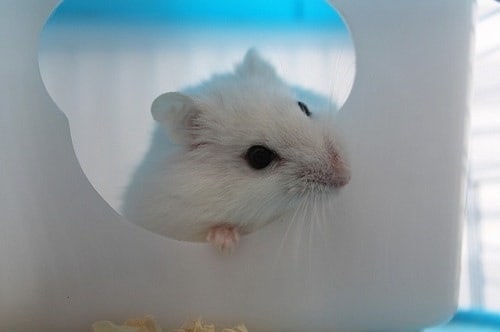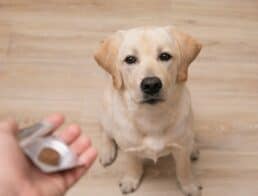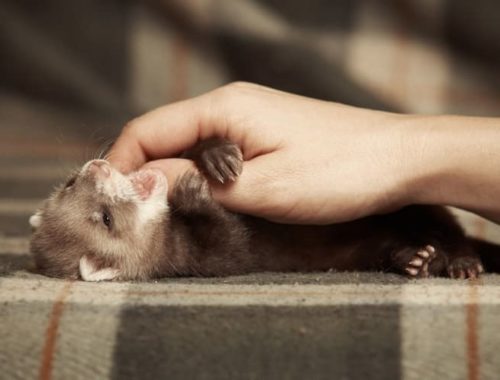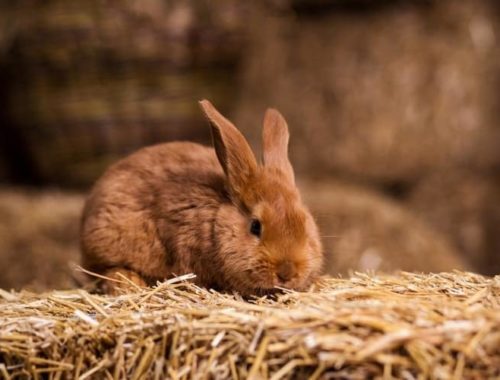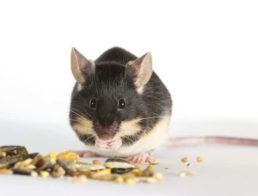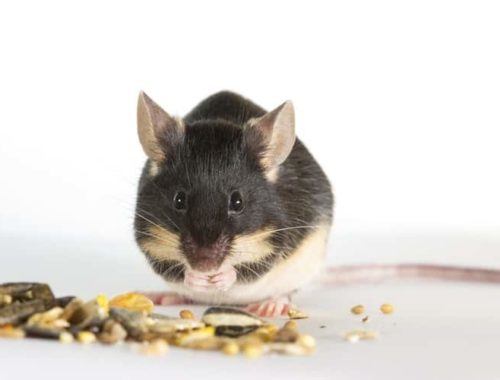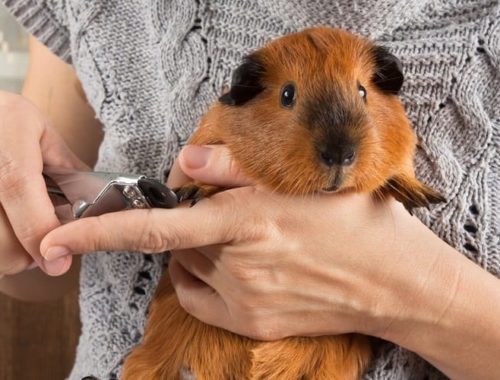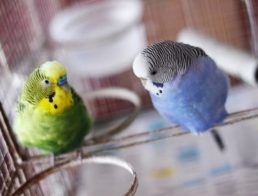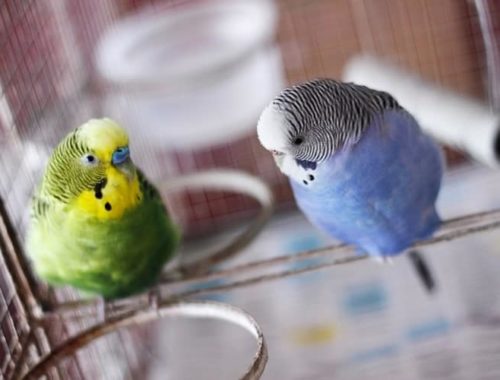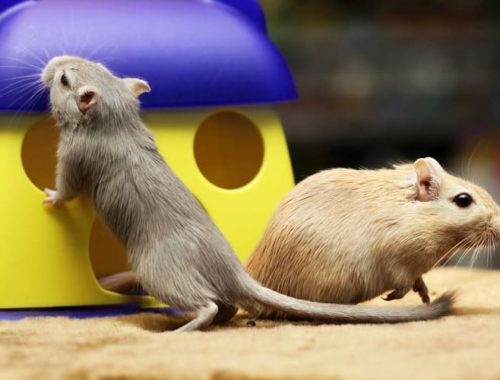Hamsters are one of the most popular small pets because of their cute appearance, petite size, and docile nature. With several varieties to choose from, such as the long-haired Teddy Bear or the very small Dwarf, it is easy to find an affordable pet at a nearby pet store or hamster breeder. Because of their low cost and shorter lifespan, hamsters are a good choice for first-time pet owners, including children. If you plan to add a hamster to your home, here is what you need to know to keep your new hamster healthy and happy.
How to Set Up for Your Pet
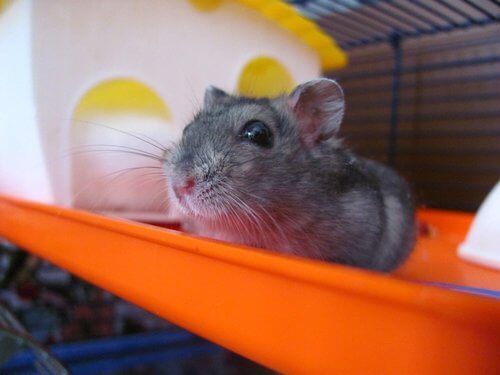
1. Choose a cage the hamster cannot escape from. Hamsters are small and can easily squeeze between cage bars. It is important that you choose a hamster cage with narrow openings that your hamster will not be able to get stuck in.
Select a cage with ample space. Even though hamsters are small, they need plenty of space to run around to simulate their foraging and daily activity. Be cautious of multi-level hamster cages that do not have ample space for your hamster to explore. For instance, the Ferplast Hamster Cage offers a wide bottom floor your hamster can explore without losing space for accessories, such as a food bowl, since the accessories can be placed on the wide second level.
2. Find a safe spot in your home to put the cage. Hamsters may get sick if they are too cold or hot. Other pets, such as dogs and cats, may try to eat or play with the hamster if the cage is accessible. Evaluate your home to figure out where the hamster would be the safest and most comfortable.
3. Put two inches of bedding onto the cage floor. The bedding will absorb urine and create a comfortable home for your hamster. Some hamster experts warn that you should not use pine or cedar wood shavings as bedding because the wood can splinter and hurt your hamster. Instead, you should use paper bedding, cellulose fiber, or aspen shavings. Make sure any bedding you buy is dye-free so you do not accidentally make your hamster sick.
4. Give your hamster ample spaces to hide. In the natural food chain, hamsters are prey animals. Hiding is an instinctive way that hamsters protect themselves. They need somewhere to hide when they are nervous or to sleep. A hamster hideout like this one will help your hamster feel very comfortable.
5. Consider buying a wheel or a hamster ball. Hamsters need a lot of exercise. Many cages come with a wheel. You may want to upgrade to a better wheel or purchase a hamster ball that you can put on the floor to watch your run.
6. Install a water bottle. One of the most important steps in setting up your hamster cage is to set up a water bottle that your hamster can reach. Make sure that the water bottle doesn’t drip or touch the bedding.
7. Fill up a food bowl or scatter food around the bedding. There are two methods that you can use to feed your hamster. You can place food in a food bowl once a day, or you can scatter the food around the cage to appeal to your hamster’s natural foraging skills. If you use the foraging method, you will need to clean out the hamster cage more frequently.
8. Add some comfortable nesting material for the hamster to use as blankets. In addition to bedding that you’ll place on the bottom of the cage, you may want to provide nesting material that the hamster can use to be even more comfortable. You can use shredded tissue paper or specialty hamster nesting material that you can purchase.
9. Pick out a variety of hamster-safe toys. As rodents, hamsters require regular access to something to gnaw on to keep their teeth healthy. Opt for dye-free and natural toys whenever possible to keep your hamster safe.
How to Feed Your Pet
1. Keep water bottle full and clean. Your hamster should have access to clean water at all times. It is a good idea to replace the water in the bottle once a day, even if it is full, to make sure that the water is fresh.
2. Feed 1 tablespoon of commercial hamster food pellets once a day. There are many options available online, at specialty pet stores, and at your grocery store. Kaytee Fiesta Hamster Food is an affordable and popular option.
3. Give your hamster fresh foods in addition to the pellets. Hamsters eat a variety of vegetables, including:
- Carrots
- Broccoli
- Spinach
- Green beans
- Asparagus
- Turnips
Hamsters enjoy eating fruits, too. Some fruits you can feed your hamster include:
- Apples
- Strawberries
- Pears
- Blueberries
- Peaches
In addition, you can occasionally give your hamster pieces of a hard boiled egg for protein.
4. Provide hard treats once a week. Hamsters need to gnaw on wood toys or hard treats, such as these chew toys. Giving your hamster a hard treat once a week is enough to help them keep their teeth in good condition and to prevent boredom.
How to Pick Up Your Hamster
1. Approach your hamster slowly with cupped hands. If you just purchased your hamster, it is natural for the hamster to be nervous and frightened. By approaching the hamster slowly, you can help to alleviate some of these fears. Sometime hamsters will bite when they’re afraid. If your hamster starts a biting habit, here are some great ways to get your hamster to stop biting.
2. Allow your hamster to smell your hands. Like many other animals, hamsters rely on smell to identify their surroundings. Give your hamster the opportunity to smell your hands to recognize you. In the beginning, this might be enough to let your hamster know that you’re not a predator.
3. Scoop up the hamster in your hands. Go from underneath the hamster and scoop him up. It is okay if you pick up a little of the bedding with the hamster.
4. Expose your hamster to life outside of its cage. The more time your hamster spends out of its cage, the less fearful the hamster will be. Using a hamster ball can be an engaging way for you to watch your hamster explore your home. Just make sure not to limit the time spent in the hamster ball, since your hamster will not have access to food and water during this time.
Some people like to use tunnels and tubes that connect to one another to provide more opportunity for hamsters to explore. If you decide to use tunnels, make sure to clean them regularly and to inspect them for chewed parts. Rough edges could hurt your hamster.
How to Clean Your Hamster
1. Keep your hamster’s cage clean. If your hamster is dirty, there is a good chance that the cage needs to be cleaned. Hamsters walk around and sit in their cages all day. If you keep the hamster cage clean, the hamster will be cleaner.
2. Give your hamster time to groom himself. In most cases, hamsters groom themselves. If you notice that he is dirty, give him the opportunity to groom himself in a clean cage.
3. Use a dust bath, if necessary. Putting your hamster in the water can cause your hamster to become too cold and possibly get sick. If absolutely necessary, you can give your hamster a dust bath in the same way that you would a chinchilla (just make sure you use a hamster-safe dust bathing sand). The hamster can roll around in a special dust bath to get rid of greasiness.
How to Clean Your Hamster’s Cage
1. Place hamster in a safe travel container. This portable hamster cage is a good option because your hamster will still have access to water while you clean his cage because of the included mini water bottle. Do not try to clean your hamster’s cage with him still in it. This would make it easy for the hamster to escape. Instead, use your travel carrier or a hamster ball to safely contain your hamster.
2. Dump out soiled bedding into a trash bag. The easiest way to clean your hamster’s cage is to dump out the bedding into a large trash bag. You should try to clean out the bedding at least once a week to reduce odors.
3. Disinfect hamster cage and hamster accessories. Use a pet-safe disinfectant, such as Nature’s Miracle Cage Cleaner for Small Animals, on the bottom of the hamster cage and on any plastic or metal accessories your hamster has access to. If you choose to use a bleach solution, make sure to completely rinse away any bleach. Cleaning chemicals can be dangerous to hamsters so it is important to thoroughly remove any chemicals from the cage.
4. Dry cage and all accessories. Using a cloth or paper towel, wipe down any excess water from the hamster cage and accessories. Dampness can saturate the hamster bedding making it less effective. In a worst case scenario, moisture could make the hamster sick.
5. Restock nesting material, food, water, and substrate. You can switch between different bedding types as you clean the cage, which can help to determine the most comfortable and odor-reducing substrate for your hamster. When you return your hamster to his cage, he will be grateful for the fresh food and nesting materials.
How to Tell if Your Hamster is Happy and Healthy
1. Check your hamster’s temperature by touching their nose. Your hamster should be warm, not cold. If you touch your hamster’s nose and it is very cold, there is a chance that your hamster is sick. Try to find a warmer place for your hamster and see if he becomes more comfortable.
In addition, you can take preventative steps to help your hamster avoid illness. You can give them a multivitamin made for hamsters to make sure they get the nutrition they need. While a dietary supplement cannot guarantee that your hamster will never become ill, it will give their immune system a better chance of fighting of infections.
2. Look for discharge on tail or eyes. A wet tail or the presence of discharge around the eyes can be a sign of infection. If you notice either symptom, call a veterinarian that is knowledgeable about small pets for advice. Depending on what symptoms you notice, there might be an over the counter solution that you can use. For instance, OASIS Wet Tail Drops can be mixed into your hamster’s water to help treat diarrhea.
3. Note activity levels. Become familiar with your hamster’s energy levels after he adapts to living in your home. Happy and healthy hamsters have periods where they run and explore their cage. If your hamster hides in their hideout all of the time and refuses to eat, this could be a sign that your hamster is scared, unhappy, or ill.
Owning a hamster can be a fun and rewarding experience. Hamsters can live two to three years, depending on the variety. With the proper care, there is no reason why your hamster will not live a full and happy life.





